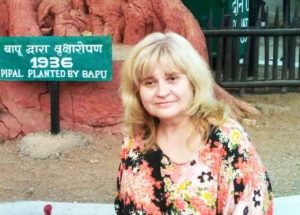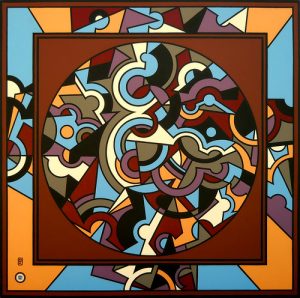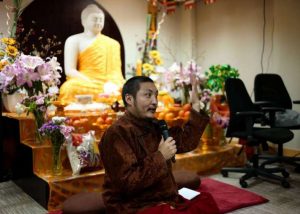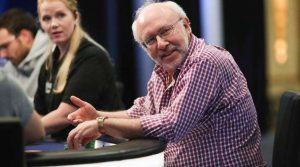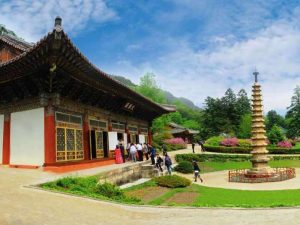
Thinley Norbu Rinpoche (1931–2011) was a quintessential Vajra Master and hands-on guru who touched the lives of countless disciples with his example, brilliance, and unflagging devotion for the Triple Gem. He held a perfectly pure view of the world and sported a superb sense of humor, among countless other qualities. Known as an emanation of the omniscient Longchenpa, a more recent predecessor was Tulku Drimed, one of Trakthung Dudjom Lingpa’s eight sons and the consort of the dakini Sera Khandro.
Rinpoche was born in Lhasa, Tibet as the first son of Kyabje Dudjom Rinpoche, Jigdral Yeshe Dorje, who was the certain incarnation of Trakthung Dudjom Lingpa. Named Jewel of Activity [Thinley Norbu] by his illustrious father, he had six remarkable siblings. Separated from his family at the age of eight, Rinpoche went to receive his education at the great monastic institution Mindrolling Monastery in central Tibet, where he remained until the age of 17. There Rinpoche studied language, ritual, and philosophy, and also became an expert dancer of the profound tantric rituals. Once his monastic education was complete Rinpoche began the next phase of tantric training, and under his father’s watchful eye went on to receive all the major empowerments, transmissions, and liberating commentaries from some of the most qualified masters of the Nyingma tradition in Tibet. Later, at the onset of the Cultural Revolution in 1966, Rinpoche escaped with his father to India and then journeyed to Bhutan, where he eventually married and fathered seven children. For many years, as his children were born and raised, Rinpoche practiced in retreat to accomplish the purpose of the scriptures that he had absorbed into his mind.
Some years later, due to poor health, Rinpoche was required to move to the West for medical treatment. This transition marked the beginning of the second stage of Rinpoche’s life. In the West, he learned English and devoted most of his time to working with the minds of his Western devotees. Rinpoche led a simple lifestyle and did not build monasteries or establish Dharma centers in the West, but rather, quietly and privately, taught his ever-expanding group of disciples on an ongoing basis. He composed a number of Dharma books in English while simultaneously writing important texts in Tibetan, which now comprise a three-volume set of his collected works. Rinpoche was continuously sought after by all Tibetans to give lineage transmissions and teachings. Although he did agree to do so occasionally, for a great Master of his stature, his chosen lifestyle was unusual and often criticized by Tibetans for being too hidden.
When I first met Rinpoche in the late 1970s, I was struck by the depth of his knowledge and his simple, unassuming style. But it was not until later, when I had some understanding of the Tibetan language, that I could even begin to fathom the depth and breadth of Rinpoche’s scholarship and realization.
After I had the honor of becoming Rinpoche’s interpreter when he gave Dzogchen teachings, I clearly saw how skillful he was in his choice of terminology. Rinpoche patiently taught how to choose terms that would emphasize the wisdom nature of the View of the Dzogchen tradition rather than using terms that were merely describing the relative experience. The first time I translated for him, Rinpoche actually had his assistant tie a string around my big toe and held on to the other end. He instructed me to stop translating when he tugged on the string as that would indicate he wanted to make an adjustment to my choice of terms, even though he always said he did not know English very well! This went on for five or six teaching sessions until one night the string was removed. I had passed the test—at least for a while.
There are countless examples of Rinpoche’s exceptional insight into the use of English Dharma terminology, as demonstrated in his published books, such as White Sail and A Cascading Waterfall of Nectar. For instance, in the opening page of Offering Praise in White Sail, Rinpoche pays homage to Manjusri: “All beings are aroused from the darkness of ignorant sleep by the youthful sun colored dawn of your entrancing noble body. The ego net of their dualism is slashed into stainless awareness by just raising your awesome, keen, flaming wisdom sword. Most all-knowing Manjusri, I, the one named Jewel of Activity, with amaranthine faith, offer ornaments to adorn you. Please illuminate the radiant wisdom spirit of my precious Buddha nature.”
Rinpoche was a quintessential Dzogchen teacher and a master of synthesizing the meaning of complex teachings into the pith points according to the upadesha (oral pith instructions) transmission tradition. He would spontaneously teach in this way to gatherings of disciples throughout Asia and in the West. The later part of his life was spent living privately at his home in upstate New York in the summer months, and in Palm Desert, California, in the winter. Tirelessly working to guide and train his circle of disciples, Rinpoche often said he was merely repaying the kindness of his friends, who were always supporting him with loving devotion—Rinpoche was extremely loyal in his commitment as a great Master, but would still refer to his disciples as friends rather than students. He was the supreme example of humility, rarely even taking a seat on a throne. In today’s world, the combination of Rinpoche’s pure example and level of realization was as rare as the sighting of a daytime star.
During the final teaching that I received from Rinpoche in Palm Desert, he again asked me to translate so that the children gathered there in particular would be sure to hear what he had to say. Rinpoche spoke on the power of karmic interdependency and how the accumulation of merit and the offering of aspiration prayers were the two principal causes for taking rebirth again in a precious human body. He cited the well-known lines that usually conclude an aspiration prayer, where practitioners pray to be born together in a single mandala and attain enlightenment simultaneously. He wanted to make sure the children would continue to make this prayer and understand that this would really come true, based upon the power of the aspiration and karmic interdependency.
On the day after Christmas in 2011, Rinpoche passed into parinirvana in Palm Desert surrounded by his devoted sons and daughters and disciples, reminding us all that death is not merely a sign of impermanence, but also reveals the nature of the deathless Dharmakaya.
May Thinley Norbu Rinpoche’s wisdom blessings and teachings always continue to inspire and guide faithful disciples on the path of the Great Perfection until all beings are brought to liberation.
Sangye Khandro has been a Buddhist since 1971 and a translator of the Dharma since 1976. She has helped to establish numerous centers in the US and has served as translator for many prominent masters in all four lineages of Tibetan Buddhism. Sangye has been the spiritual companion of the Venerable Gyatrul Rinpoche for nearly 30 years and has continued to help serve the centers established by her root teacher, Kyabje Dudjom Rinpoche, with whom she studied and practiced for many years. She is one of the founders of the Light of Berotsana Translation Group. For more information, see her extended biography at Sangye Khandro.
Editor’s note: Thinley Norbu Rinpoche’s incarnation, Gyanata Rinpoche, was recognized in Bhutan by HH Dodrupchen Rinpoche in October this year. See Incarnation of Kyabje Dungse Thinley Norbu Rinpoche Recognized in Bhutan.



